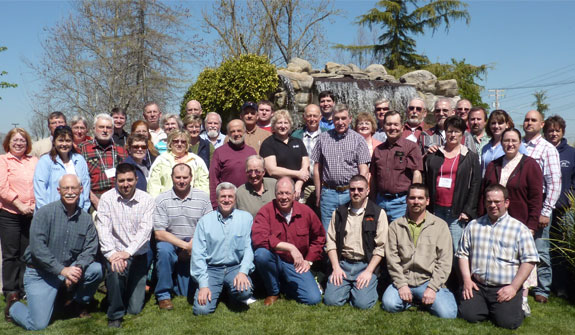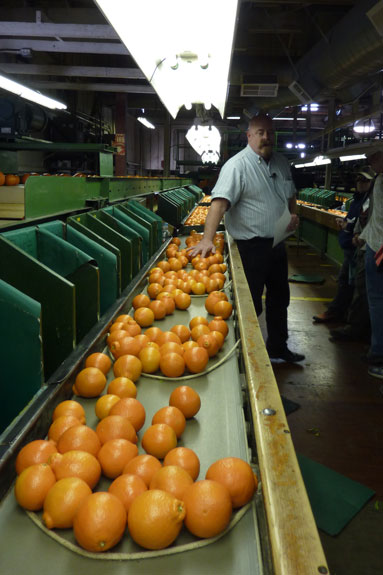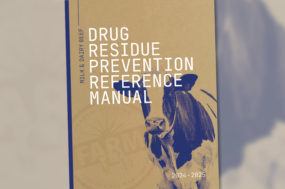The keystone of programs offered by the Professional Dairy Managers of Pennsylvania is offering opportunities for Pennsylvania producers to learn from other producers – to hear their experiences, visit their operations and network within the industry. And what better place to visit and learn than sunny California?
During PDMP’s 2012 Dairy Tour in south-central California March 19-22, members got the chance to see the exciting strategies dairy farms of all sizes are using to improve their products, streamline production and boost profits.
At Lakeside Dairy, PDMP members learned firsthand how the folks in Hanford responded to the 2009 milk prices with a $3.5 million project to construct a 891-kilowatt solar energy system on four acres, a system that provides 90 percent of the dairy’s energy needs.
In Lemoore we saw how husband and wife Tony and Barbara Martin, third-generation dairy farmers, started the Dairy Goddess Cheese Company in 2010 and, just one year later, were selling their products at 14 farmers’ markets, three specialty stores and a Whole Foods.
And we visited with the Fiscalini family, which has been dairying in California since the late 1800s and has been a national leader in animal welfare issues, environmental stewardship and food safety.
At Ruann and Maddox Dairies, we saw how a great staff and sound reproductive strategies resulted in more than 2,000 pregnancies last year and has enabled the Maddox family to develop a business marketing semen and embryos around the globe.
The Fernandes family at Fern Oak Dairy in Woodville were great hosts and examples of how distribution of labor and employees enables brothers to function as a team … not to mention how feed quality and cow comfort make the difference in production.

And interacting with the Ahlem family and the team at Hilmar Cheese Company was so invigorating for our group. Their story, which began in 1984 with four tanker loads per day and now handles more than 200 and produces 20 percent of the nation’s natural American-type cheese, is a model for any business in any industry.
Another highlight of the tour was the joint dinner among PDMP members and the members of Western United Dairymen, an organization representing more than 60 percent of the dairy produced in California. And we got away from the dairy industry a bit too. It was just as interesting to see how other agricultural enterprises make a go of it, as the dairies.
We got a behind-the-scenes look at a citrus packing plant, toured a raisin vineyard and walked through the largest feed manufacturer west of the Mississippi River.
And throughout our travels, we always had each other, on the bus, during meals and throughout the day to interact, share ideas and thoughts about what we were seeing and learning.
Many who participate in our annual Spring Dairy Tour say that the interactions on the bus are some of the best learning opportunities to which they are exposed. That interaction is always part of our PDMP programs, here in Pennsylvania and in our national tour states as well.

It’s these kinds of opportunities for collaboration and networking that make PDMP a great resource for dairy producers and give us a positive impact on the dairy industry as a whole.
The 2012 Spring Dairy Tour was made possible with the extraordinary efforts of Michele Moyer of the Penn State Dairy Extension Team and the support of Elanco Animal Health, Genske, Mulder & Co, John Deere, Merck Animal Health and Stewart-Peterson. PD
—Photos and information provided by Alan Novak, Executive Director of the Professional Dairy Managers of Pennsylvania
PHOTOS
TOP RIGHT: At Lakeside Dairy in Hanford, California, solar panels provide up to 90 percent of their energy needs.
MIDDLE RIGHT: PDMP members on their tour at Hilmar Cheese Company in Hilmar, California. Hilmar annually produces more cheese from one site than any manufacturer in the world.
BOTTOM RIGHT: The tour wasn’t limited to dairy. This agricultural region is one of the country’s most diverse. Oranges, almonds, grapes and olives are grown in the region.



